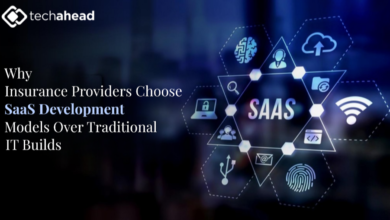Cleaning Smarter: The Next Generation of Cleaning Businesses

In a world where technology is transforming every industry, the cleaning sector is no exception. The future of cleaning businesses lies in the seamless fusion of AI, deep data insights, and smarter operations that go beyond mops and vacuums. These innovations are not merely about novelty – they are designed to support the growth of a cleaning service while driving competitive advantage, cost control, elevated service, and sustainability.
AI as the Backbone of Intelligent Cleaning
Artificial intelligence is already reshaping how cleaning gets done, and its influence is only going to deepen. Companies are deploying robotic vacuum systems, floor scrubbers, and window-cleaning machines that use computer vision and adaptive pathfinding to navigate complex spaces. Sensors embedded in high-traffic zones feed real-time data into AI models, which discern patterns, spot neglected zones, and dynamically trigger extra cleaning. Predictive maintenance is another key AI application: tools can forecast when a pump, motor, or filter is about to fail and schedule service before breakdowns occur. Meanwhile, chatbots and virtual assistants are handling appointment booking, client messaging, and FAQ responses – round-the-clock support that frees staff from repetitive tasks. AI doesn’t aim to displace human cleaners but to enable them, offloading rote tasks and enabling a more efficient, higher-value role.
See also: Selling Your Business? Meet the Brokers!
Data Insights and Decision Intelligence
To run a thriving cleaning business in the coming decade, it’s no longer enough to “clean well.” Leaders must understand which customers, locations, and service types are most profitable, and that means becoming data driven. A robust operations platform can ingest data from scheduling, inventory, payroll, equipment sensors, customer feedback, and financials, and then run advanced analytics to surface insights. For instance:
● Which clients incur hidden costs and erode margins?
● Which part of the city yields higher yield per hour?
● Are there seasonal trends or demand spikes that require scaling or staffing flexibility?
Dynamic pricing (raising or lowering fees based on demand, distance, or complexity) is already possible via AI engines that ingest supply and demand data. Operations dashboards enable managers to monitor KPIs such as job profitability, cost per square foot, and overtime burden. Over time, machine learning models refine estimates, making quoting more precise, reducing margin leakage, and guiding investment decisions. Yet this kind of data sophistication depends on clean, unified systems. Fragmented apps or spreadsheets won’t cut it. The businesses that succeed will use platforms that integrate scheduling, CRM, equipment telemetry, billing, and quality control into one coherent environment.
Smarter Workflow, Smarter Teams
Even with AI and data engines, the human workforce remains essential – as supervisors, quality enforcers, or cleaning specialists in complex environments. The trick is to arm your teams with tools and workflows that minimize friction and maximize impact.
For example:
1. Route optimization: AI can suggest daily routes that minimize travel time, cluster jobs efficiently, and reduce fuel and idle costs.
2. Smart checklists & augmented reality: Using tablets or smart glasses, cleaners can follow dynamically adjusted checklists that adapt based on client history or sensor input, ensuring no spot is overlooked.
3. Mobile feedback loops: Cleaners capture photos of completed work, which feed into quality-control AI that highlights missed spots. Managers can intervene before client complaints arise.
4. Performance coaching: Using logged data on time spent per task, AI can detect patterns (e.g. one cleaner is slower in bathrooms) and trigger targeted training or adjustments.
What’s more, by automating administrative tasks – payroll, invoice generation, quoting, dispatch, team is freed from busywork and can focus on delivering exceptional service and client relationships.
A Real-World Snapshot
In one residential servicing operation, professional cleaning services like cleanmyspacect.com demonstrate how a team can distinguish itself by using EPA-certified equipment and preventive protocols to avoid cross-contamination, emphasizing staff vetting and attention to high-touch zones. They commit to back-to-back satisfaction checks through brief client surveys after service. They also make a point of extending support beyond commercial gain: for example, offering free cleaning sessions to clients in vulnerable health circumstances. The model is built on trust, community, accountability, and a vision that cleaning is not just a job but a service with dignity and impact.
Implementing the Vision – Where to Begin
Transforming a cleaning business into a high-efficiency, AI-augmented enterprise may sound daunting, but the path is incremental:
● Step 1: Audit your processes. Identify your biggest pain points—double bookings, no-show clients, inefficient routing, supply waste.
● Step 2: Deploy one pilot AI module. Start with scheduling automation or chatbot response, see early ROI, and build confidence.
● Step 3: Clean data foundations. Ensure you hold clean, high-quality data so that AI models will produce accurate insights.
● Step 4: Integrate your systems. Use a platform that ties operations, finance, CRM, and field data together.
● Step 5: Upskill your team. Teach staff how to interpret dashboards, act on feedback, and collaborate with AI tools.
● Step 6: Scale and iterate. Once one location or service type is running smoothly, expand to others, refining models and workflows.
Why Those Who Wait Might Be Left Behind
The sweeping adoption of AI and analytics in cleaning is not hypothetical, it’s accelerating. Companies that remain rooted in manual scheduling, paper checklists, or siloed spreadsheets will find themselves outmatched on speed, cost, consistency, and client expectations. Technology-savvy competitors will push margins tighter, gain share, and capture more loyalty. Integrating AI and data isn’t just about catching up, it’s about leapfrogging toward a smarter, more resilient, scalable future.
Fun fact: robots equipped with machine learning can adapt their cleaning method to gradually learn ideal spray or suction settings for specific surface types, improving performance over time.
In short, the cleaning businesses that thrive in the years ahead will be those that see themselves not just as home or facility service companies, but as data-enabled service platforms, with AI as a silent partner, insight engines guiding every move, and operations so smart that what once took hours now takes minutes. The tools are here, and the leap from analog to intelligent is open to any company bold enough to begin.



